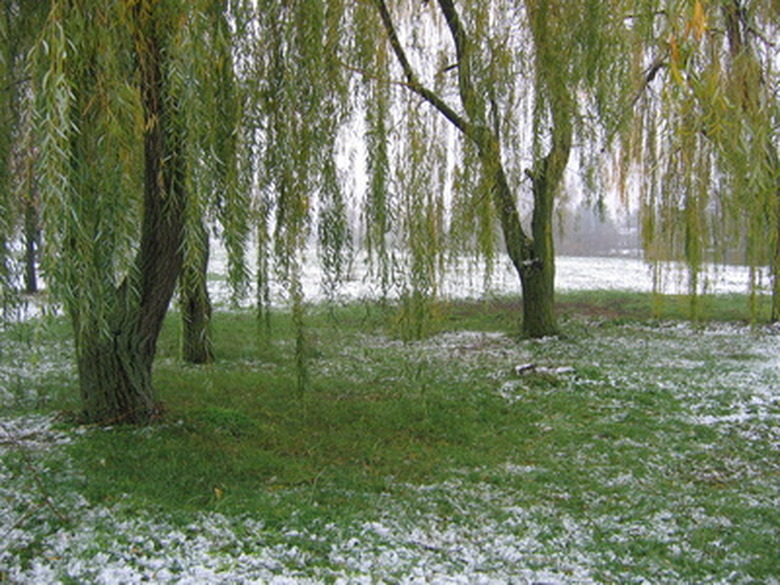Diseases Of Willow Trees
Willow trees (Salix spp.) are susceptible to several common diseases that attack many types of deciduous trees, as well as a few diseases that are specific to the Salix tree species. Properly diagnosing the disease that's infecting your willow tree is the most important step in treatment. Some diseases are caused by harmful fungi. Others are caused by a bacterium, making the treatments vary widely.
Crown Gall and Willow Gall
Crown gall is caused by a bacterium that creates small, round growths on the roots and stems of the willow tree. In moderate to severe infections, stunted growth, leaf discoloration and die-back of the twigs may be evident. Willow gall creates the same type of odd growths on the willow tree's leaves. Only severe gall infections will harm willow trees. These diseases can be controlled by pruning away and destroying all infected leaves and twigs. If your willow tree has crown gall with growths near the soil line and up the trunk, remove the heavily infected tree and avoid replanting in the same area for at least two years.
- are susceptible to several common diseases that attack many types of deciduous trees, as well as a few diseases that are specific to the Salix tree species.
- These diseases can be controlled by pruning away and destroying all infected leaves and twigs.
Willow Scab
Willow scab is caused by a fungus that attacks the new-growth leaves. The fungal disease infects the twigs and branches, causing them to die very rapidly. Olive-green spore masses will appear on the undersides of the leaves. To treat willow scab, apply an appropriate fungicide to the willow tree. Prune away and discard all infected branches, twigs and leaves.
Black Canker
Often seen with willow scab is black canker, which causes dark-brown spots on the leaves. Grayish-white lesions appear on the stems and twigs, with black edges around the lesions. Willow blight is caused by the willow scab fungus in combination with the black canker fungus, called Physalospora miyabeana. This combination of fungal diseases can cause branch and twig die-back, severe defoliation and death. Apply a recommended fungicide to the infected willow tree and prune away and discard all infected growth. Carve out and cut away all cankered spots.
- Willow scab is caused by a fungus that attacks the new-growth leaves.
- Apply a recommended fungicide to the infected willow tree and prune away and discard all infected growth.
Foliar Diseases
Several foliar diseases affect the willow tree's leaves, including powdery mildew, rust and tar spot. These fungal diseases usually are not serious and don't threaten the willow tree's life. Powdery mildew causes a white, powder-like coating on the leaves. Rusts create yellow spots on the undersides of the leaves. Tar spot creates raised black spots on the leaves. All of these foliar diseases are caused by fungi that can be treated with fungicides. Rake up and discard all fallen leaves from around the infected willow tree to prevent the spread of the fungal spores.
- Several foliar diseases affect the willow tree's leaves, including powdery mildew, rust and tar spot.
- Rake up and discard all fallen leaves from around the infected willow tree to prevent the spread of the fungal spores.
